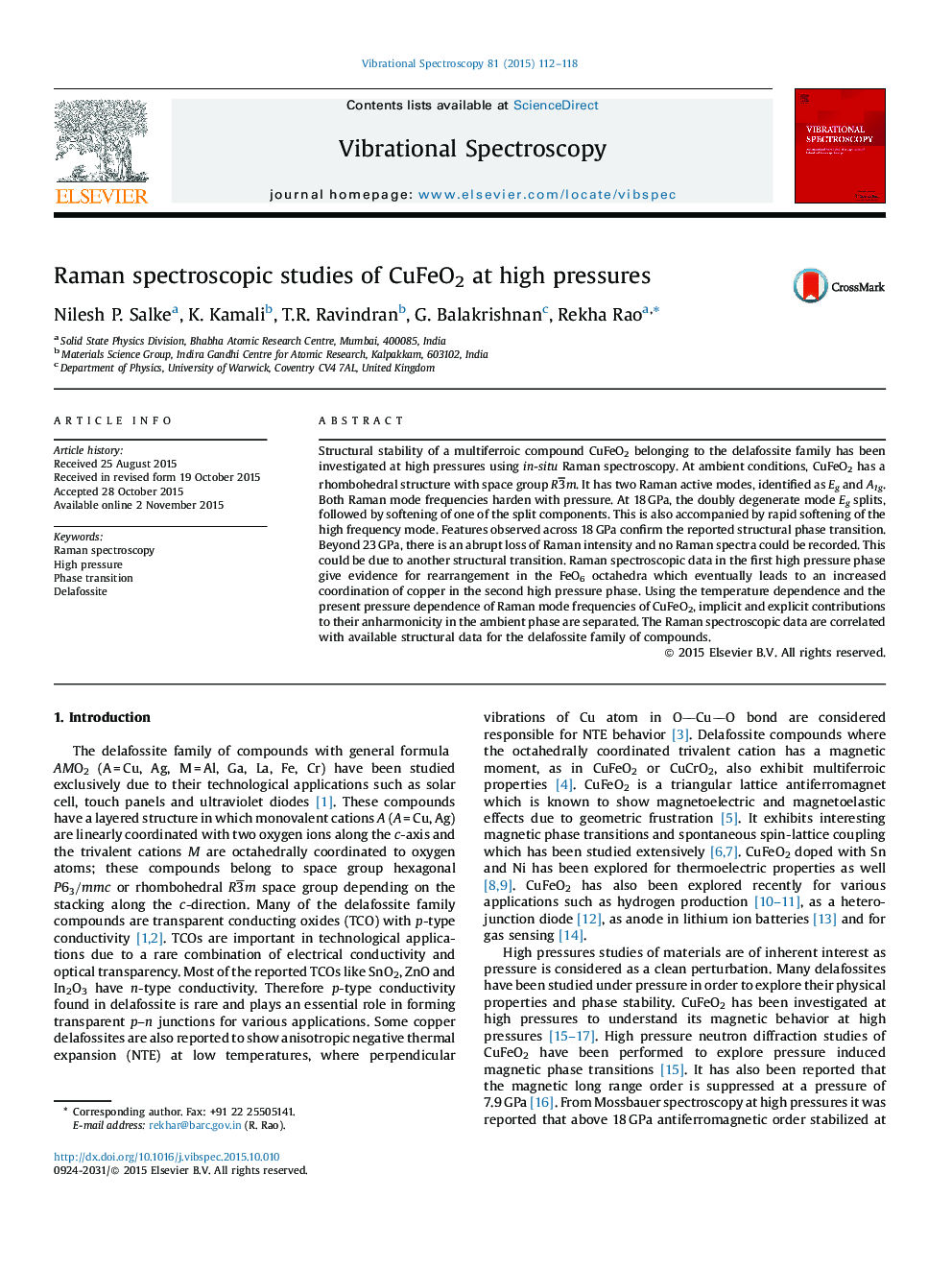| Article ID | Journal | Published Year | Pages | File Type |
|---|---|---|---|---|
| 1250232 | Vibrational Spectroscopy | 2015 | 7 Pages |
•We present Raman spectroscopic study of high pressure structural stability of CuFeO2.•Correlated Raman frequency with reduced mass of vibrating atoms for delafossites.•Transition pressure is correlated with ratio between both cations radii for AMO2.
Structural stability of a multiferroic compound CuFeO2 belonging to the delafossite family has been investigated at high pressures using in-situ Raman spectroscopy. At ambient conditions, CuFeO2 has a rhombohedral structure with space group R3¯m. It has two Raman active modes, identified as Eg and A1g. Both Raman mode frequencies harden with pressure. At 18 GPa, the doubly degenerate mode Eg splits, followed by softening of one of the split components. This is also accompanied by rapid softening of the high frequency mode. Features observed across 18 GPa confirm the reported structural phase transition. Beyond 23 GPa, there is an abrupt loss of Raman intensity and no Raman spectra could be recorded. This could be due to another structural transition. Raman spectroscopic data in the first high pressure phase give evidence for rearrangement in the FeO6 octahedra which eventually leads to an increased coordination of copper in the second high pressure phase. Using the temperature dependence and the present pressure dependence of Raman mode frequencies of CuFeO2, implicit and explicit contributions to their anharmonicity in the ambient phase are separated. The Raman spectroscopic data are correlated with available structural data for the delafossite family of compounds.
